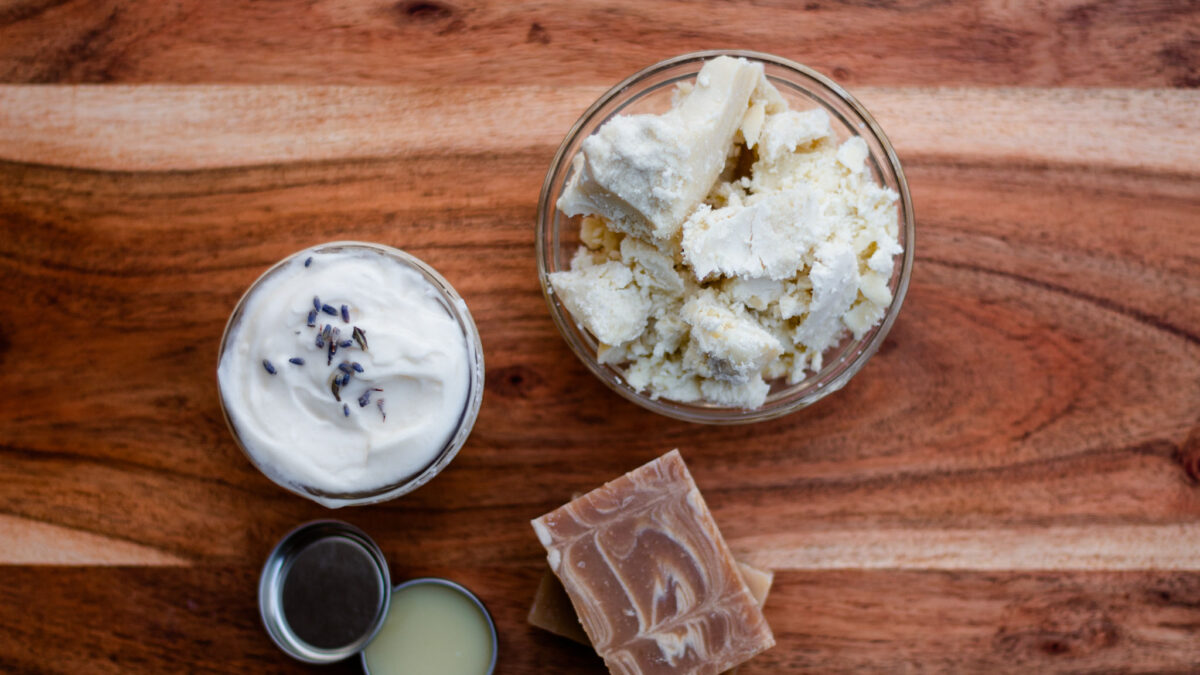Everything You Need To Know About Shea Butter
Shea butter is one of the most popular skincare ingredients in the world. It’s a wonder ingredient that appears in everything from hair products to body lotions. You will want to incorporate shea butter into your routine to help nourish your body. You might pass it by on the shelf inside a store and think “it’s just shea butter”.
We’re going to tell you everything that you need to know about shea butter and why it’s one natural ingredient that you should be using every day.
What is Shea Butter?
When you think of the consistency of shea butter, you would probably never imagine that it comes from a nut. Shea butter is the fat that is extracted from the nuts that grow on shea trees in West Africa.
Shea butter has been used for generation and was first used by women in Ghana to help protect their skin from becoming dry in the Saharan weather. It is one of the few skincare ingredients that are safe for all skin types, with no medical research showing related allergies occurring from its use.
It is infamous for its hydrating and moisturising properties as it is rich in fatty acids. Shea butter absorbs into your skin quickly, letting the moisture lock into your skin while restoring your skin’s natural protective barrier. While the consistency of shea butter is thick, it absorbs quick enough that it doesn’t leave an oily residue to your skin.
Do you want to start thinking about anti-ageing?
Shea butter contains antioxidants that protect your skin from the free radicals that lead to premature ageing and the development of fine lines and wrinkles.
Shea butter is a product that you can use at any age. It helps prevent everything from acne to ageing. One of the components of shea butter is triterpenes which improve your collagen production to give you glowing skin.
Raw and Unrefined Shea Butter
Raw shea butter is exactly what it says on the tin. It’s the pure shea butter from the nut without any added preservatives. Unrefined shea butter is the version that has been used for hundreds of years. It is still extracted from the nut in the same way that it was in Ghana generations ago.
You can typically tell if shea butter is in its unrefined form when it is slightly beige or ivory in colour and has a strong nutty scent. Raw and unrefined shea butter is safe to apply straight onto your skin and hair. It should be as easy to spread as butter.
Unrefined shea butter keeps all the natural benefits, including the vitamins that are sealed inside the cream.
If you want to have the highest potency of shea butter, then you should opt for the raw and unrefined version.
Refined Shea Butter
While raw shea butter is the purest form of the product, refined shea butter is the enhanced version. Shea butter is typically refined through the use of heat, along with the addition of chemicals. You can tell that your shea butter is refined if it is white in colour and fragrance-free.
The refining process of shea butter causes the loss of most of its key benefits. While it will still moisturise your skin, you will lose some of the additional nourishment from nutrients like vitamins. Refined shea butter is what you’ll typically find on the high street as the refining process increases its shelf life.
The Many Uses of Shea Butter
Shea butter is a hero product that you can use for almost anything. It would be impossible to list every way that you could use raw shea butter.
We often reach for shea butter for its anti-inflammatory properties. It serves as an effective treatment for the side effects of eczema and can soothe the redness in your skin that can be caused by everyday environmental factors like pollution. Shea butter is an ideal skincare product if you suffer from dermatitis or psoriasis.
Do you suffer from stretch marks or scarring to your skin? Shea butter can help your skin cells rejuvenate to help scars heal quicker while diminishing the appearance of stretch marks.
One product you should use all year round is sunscreen. Even when it’s snowing outside, the sun is still there. While it may be out of sight, it shouldn’t be out of mind. While you can’t use shea butter as a replacement for sunscreen, it can add an extra layer of protection to your skin.
You have probably seen shea butter as a primary ingredient in shampoo. It can improve the strength of your hair and prevent breakage. Dandruff is another condition that you can treat with shea butter. If your scalp becomes exceptionally dry, dandruff can form, and your scalp can feel itchy. You can think of shea butter as a moisturiser for your scalp, hydrating and locking in moisture to prevent the tell-tale flakes from appearing your hair.
If you burn easily in the sun or attract insect bites, then you’ll want to keep a jar of shea butter nearby throughout the summer. It reduces the redness and swelling of a sunburn thanks to its high levels of fatty acids.
For optimum results, you want to store your shea butter at room temperature to keep it as a solid.
When it comes to shea butter, natural is always best. Having a jar of shea butter on hand can help you treat an array of ailments. Raw shea butter, without the addition of parabens and chemicals, is safe to use on all skin types and for any age. It’s one of the few products that you can use to treat anything from a dry scalp to a nasty sunburn. Shea butter is still produced in Ghana today using the original method of
harvesting by hand. The practice of using shea butter is one that has last for generations.
You can treat your skin to rich nourishment with raw and unrefined shea butter.


